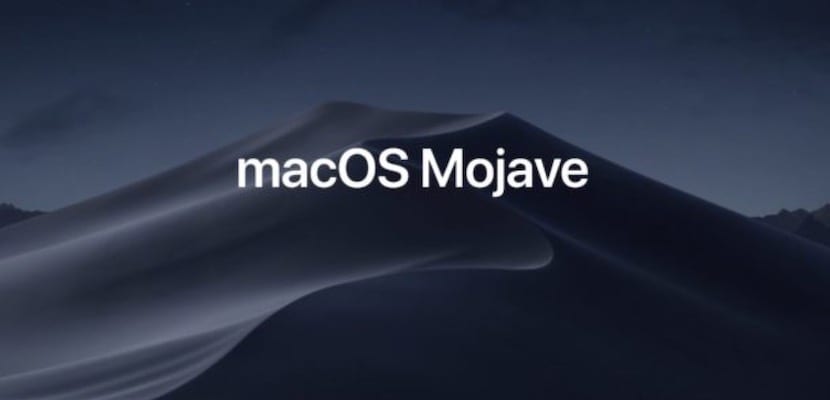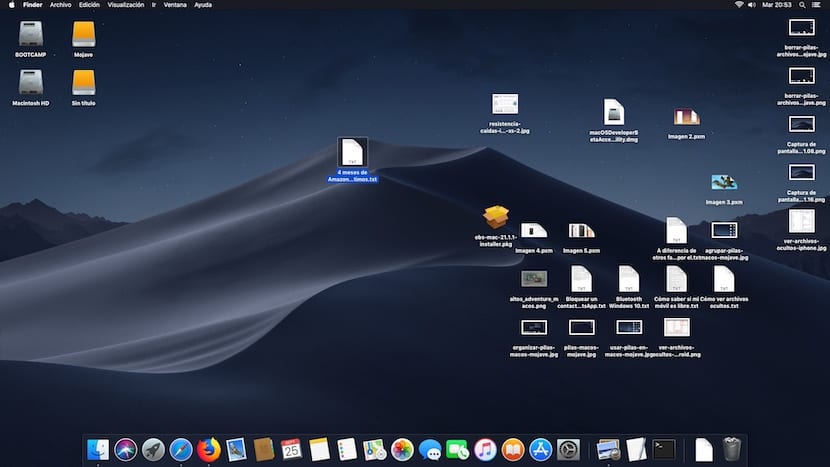
Since last Monday, the new version of macOS for Mac computers, which have been on the market since 2012, is now available under the name Mojave. In Soy de Mac, we have made various tutorials to show what are the main functions what this new version offers us and how they work.
Without a doubt, one of the ones that attracted the most attention during the WWDC 2018 in which macOS Mojave was presented, is the dark mode, a dark mode that is very easy to activate as we show you in this article. Another novelty, especially for the most disorganized in the function stacks of files or stacks in English.
This function takes care of automatically stack all the files on the desktop depending on the type of file it is. In this way, by activating this function, which is natively deactivated, we can quickly clean up our desktop by grouping all the files together in heaps.
Al click on each stack of files, all those that are stacked are shown so that we can interact with them as if they were not grouped. If you want to activate this function, then we will show you how to do it.
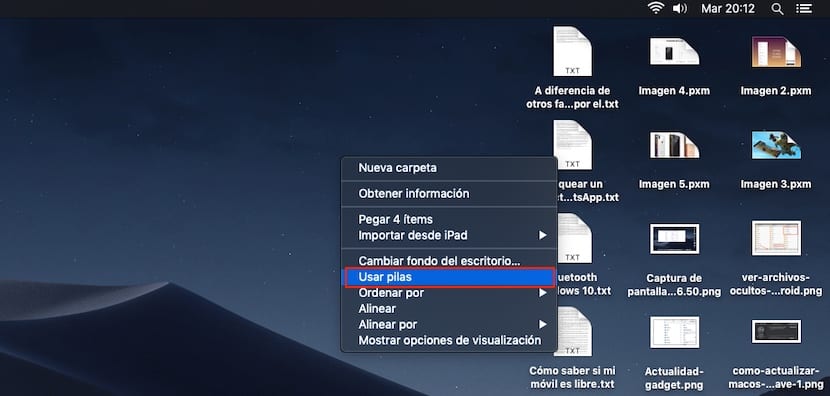
If we already have a considerable amount of files on our desktop, we just have to go to a blank space on our desktop, press the right mouse button, or click with two fingers if we use the trackpad and press the option Use batteries.

At that time, we will see how all files will be grouped into heaps, depending on the type of file they are. In my case, as you can see in the image above, macOS has grouped the files into documents, images, screenshots, and more. The stacks are created vertically and we cannot move them around the desktop, a function that Apple could add in future updates.
If we want all files return to their original positionWe just have to do the reverse process and uncheck the Use batteries option. At that time, all files will return to their original position
How to group stacks
As I have commented above, one of the functions that macOS should include in future updates is the possibility of being able to move the batteries we create around the desk, since they are only located on the right side of the screen in a vertical position, something that may not be the most appropriate for many users and they prefer to place them at the top of the screen horizontally.
While it is true, that the option batteries has no additional configuration, macOS makes a series of settings available to us so that we can sort the content that is displayed in them. Once the batteries are activated in macOS, we press again with the right mouse button or with two fingers if we use the track to access the menu again where we activate it.
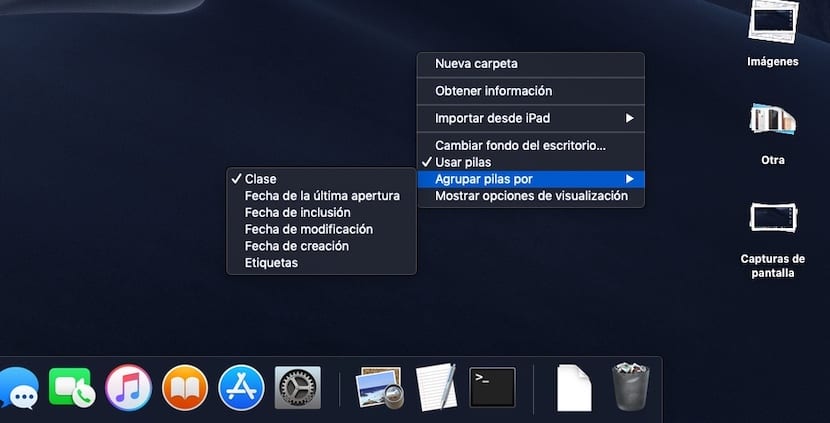
Right at the bottom is a new option called Group Stacks By. The options that macOS makes available to us for organize stacks with:
- Class
- Last opening date
- Inclusion date
- Modification date
- Creation date n
- Tags
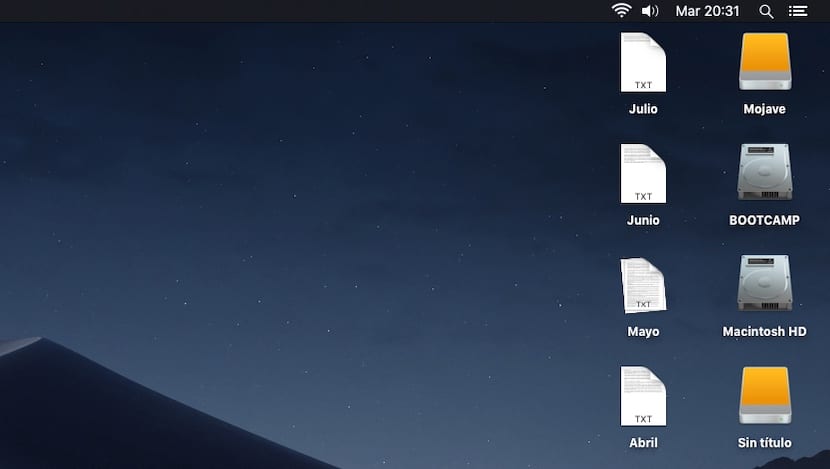
When you click, for example, Last Open Date, macOS will show the stacks organized depending on the month or day in which they were last opened. In this way, it is much easier to access the latest documents that we have created and hosted on our macOS desktop.
If we make use of the labels for, the batteries will be displayed according to the labels with which we have classified the files, in order to be able to access the files more quickly according to our classification or labeling.
How to delete file stacks
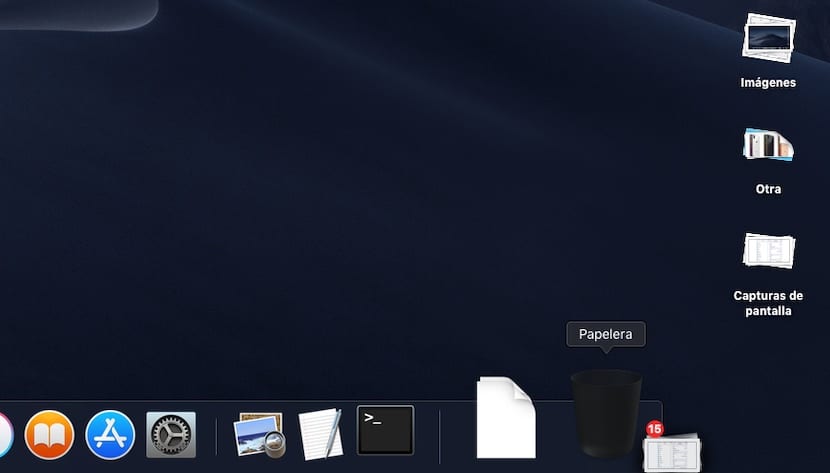
Since Apple offers us an option to group together the different types of files that we put to have located on our desktop, also allows us to delete them together, an option that is appreciated, especially if we have finally decided to put an order on our desk.
To delete the file stacks that macOS has created when activating this function, we just have to move the stack of files to the recycle bin. When trying to recover the files from the trash, if that were the case, they will not be grouped together, so we will have to go one by one checking which ones we want to recover or return them all to the desktop and check the batteries that has created this option, if we still have it activated on our computer.
My Mac is not compatible with macOS Mojave but I want to use file stacks
As I mentioned at the beginning of this article, Apple has left out of this update all equipment prior to 2011 (included), being the only compatible models those that the company launched from 2012. If you want to enjoy this function, but you have a Mac not considered among the unsupported equipment, my colleague Jordi published an article a few days ago where we show you how can we install it to take advantage of new features.
If you don't have the time or desire to complicate your life a bit to be able to take advantage of the new functions that macOS Mojave offers us, you must have a little patience, because surely some developer launches an application that allows you to use this function and it will probably add new customization features that are not available natively.
How to upgrade macOS Mojave from scratch
Yes, still you have not decided to install the latest version of macOS available for compatible Mac, again my colleague Jordi has created an excellent tutorial where we show you all the steps to follow in order to perform a completely clean installation of macOS Mojave.
Thanks to iCloud, it is very easy to make a backup of all our files. Also, always a completely clean installation is recommended of each new version of an operating system, regardless of whether we are talking about a computer or a mobile device.
